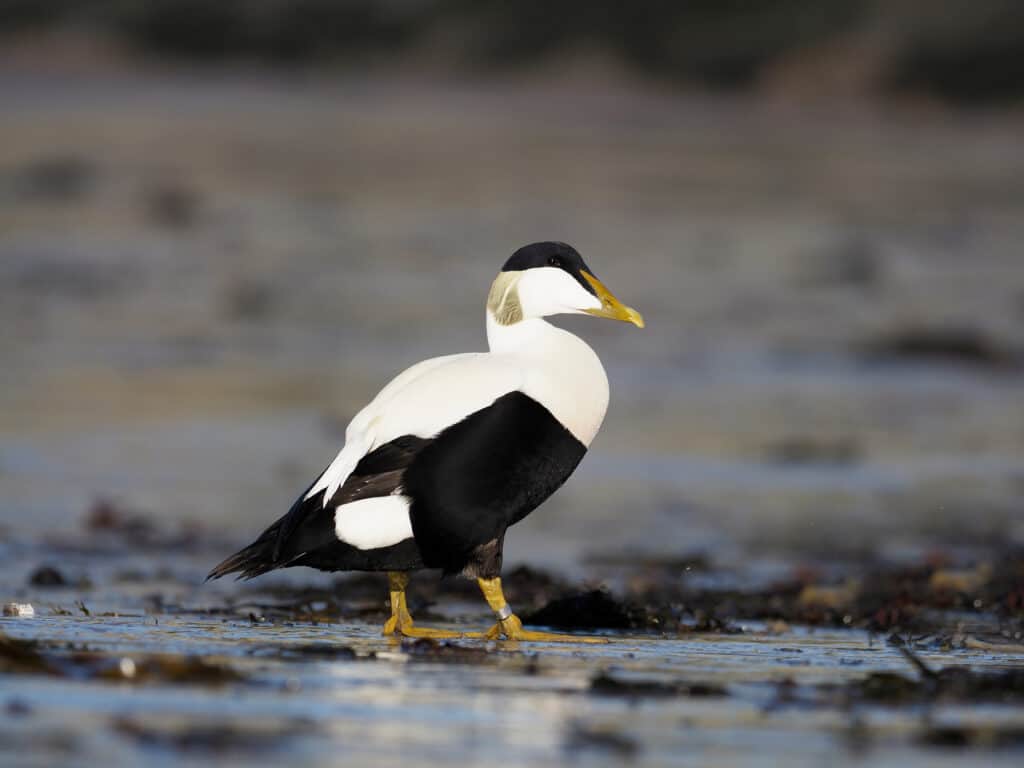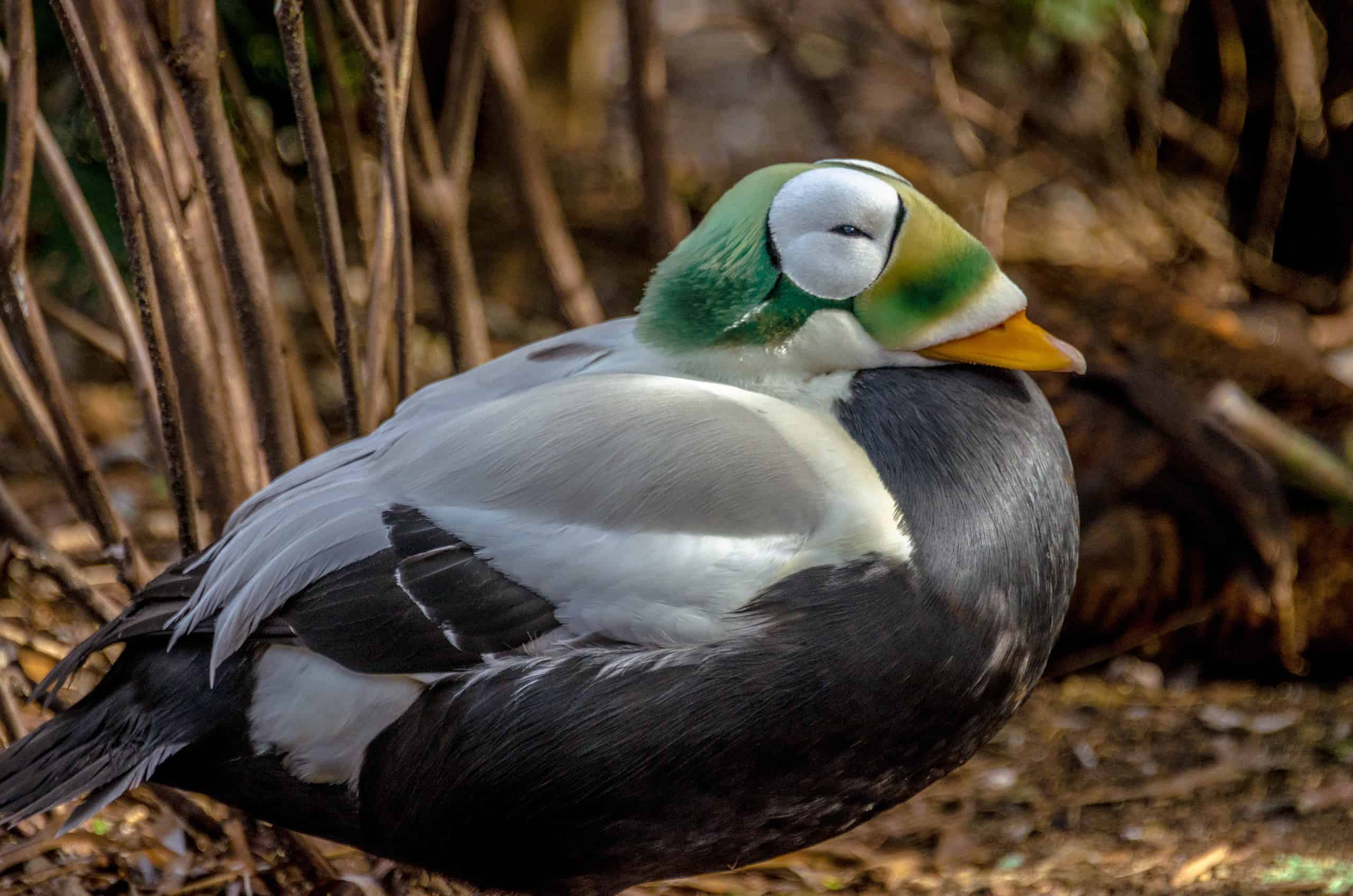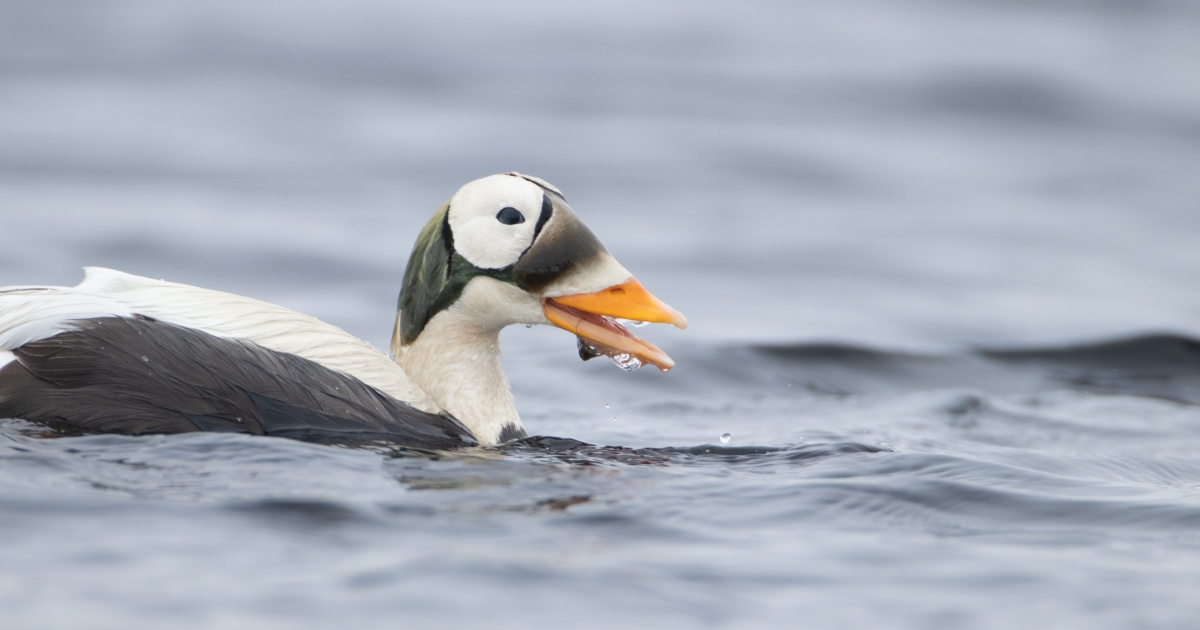The eider (Somateria) is a genus of large seaducks in the cold northern hemisphere, inhabiting the Arctic tundra and Sub-Arctic coastlines. These swift fliers can reach exceptional speeds as they dive under the water’s surface, snatching mollusks and other marine animals and plants. Discover all the fascinating facts about eiders, including where they live, what they eat, and how they behave.

They use their famous eiderdown to form and line their nests.
They can fly up to 40 mph!
Eiders are sexually dimorphic, with males being larger and more colorful.
They can dive underwater as deep as 180 feet but prefer to forage in shallower waters.
Two of three eider species are near threatened due to several threats, including habitat shifting from climate change.

Eiders are generally social birds, forming monogamous bonds during breeding and foraging, and migrating with large flocks. These ducks are swift, agile fliers, reaching up to 40 mph! They are also excellent swimmers and divers, spending their lives around coastlines. Males produce pleasant cooing calls, and females’ vocalizations are more quick-like. They can be rather noisy when flocked together.

Eiders don’t typically mate for life but may remain monogamous during one breeding season. And multiple males may court one female by producing low cooing calls and exaggerated movements. Females lay two to seven eggs and incubate them for 22 to 24 days. The young can fledge the nest shortly after hatching (common eiders), but some, like the spectacled eider, may leave around seven weeks. Eiders become sexually mature around two years and can live an average of nine years.
:max_bytes(150000):strip_icc()/GettyImages-546289571-1f3430ddba3e448fba08f37bbbf3935a.jpg)








